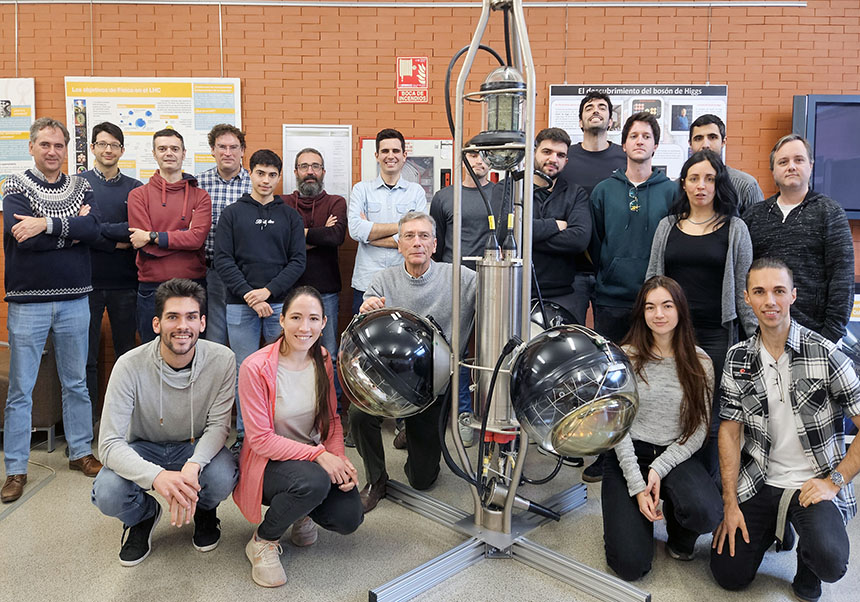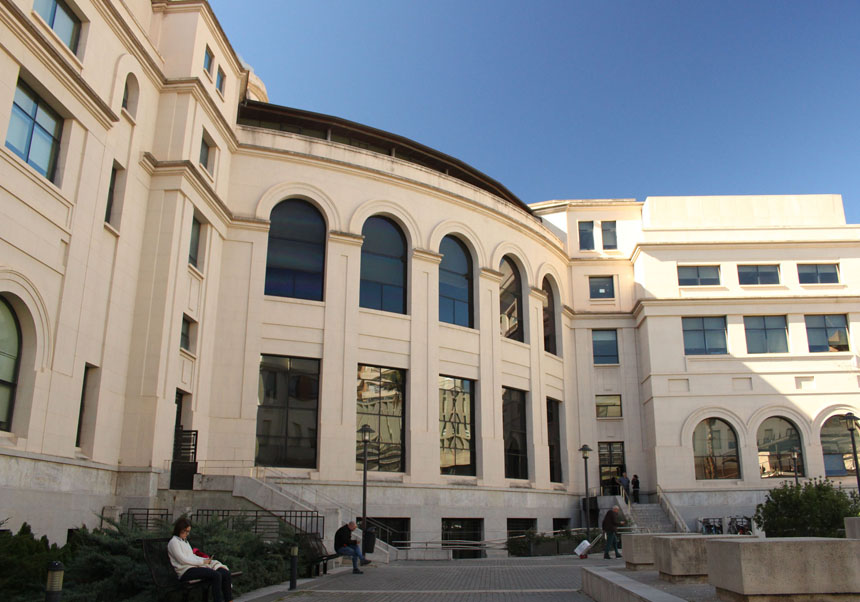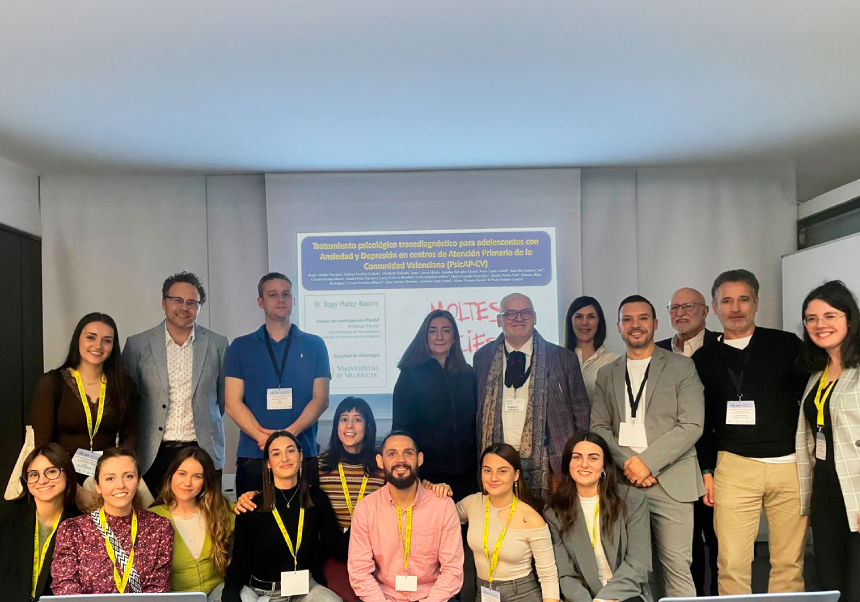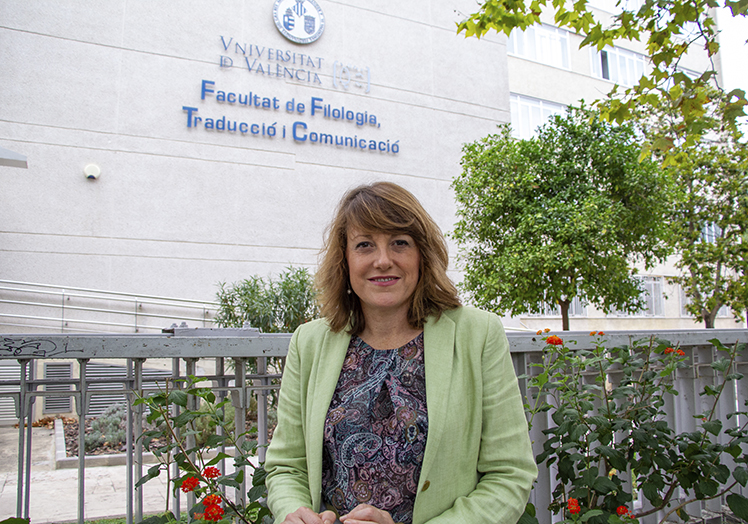The KM3NeT detector submerged in the Mediterranean captures the highest-energy neutrino ever observed
- Science Park
- February 12th, 2025

An international collaboration involving the Institute of Corpuscular Physics (IFIC, UV-CSIC) has just published in Nature the detection of the most energetic neutrino ever recorded. The finding, featured on the cover of the prestigious journal, highlights the potential of this experiment to study the cosmos through neutrinos, the second most abundant particle in the universe after light. The Spanish collaboration in the KM3NeT is coordinated by physicist Juan de Dios Zornoza Gómez from the University of Valencia.
On 13 February 2023, the ARCA detector of the KM3NeT underwater neutrino telescope detected an extraordinary event associated with a neutrino of an estimated energy far greater than the particles produced by CERN’s LHC: around 220 PeV (220,000 trillion electronvolts). This event, named KM3-230213A, is the most energetic neutrino ever observed to date and provides the first evidence that neutrinos with these characteristics are produced in the Universe. After extensive and meticulous analysis and interpretation of the data, the KM3NeT collaboration has just reported the details of this finding in an article published in Nature.
The detected event was identified as a muon – an elementary particle related to the electron – that passed through the entire detector, triggering signals in more than a third of the sensors. The inclination of its trajectory, combined with its enormous energy, provides compelling evidence that the muon originated from a cosmic neutrino interacting in the vicinity of the detector.
“KM3NeT has begun exploring an energy and sensitivity range where detected neutrinos may be produced in extreme astrophysical phenomena. This first detection of a neutrino of hundreds of PeV opens a new chapter in neutrino astronomy and a new observational window into the universe”, says Paschal Coyle, spokesperson for KM3NeT at the time of the detection and researcher at the IN2P3/CNRS Particle Physics Centre in Marseille, France.
Neutrinos: the most mysterious of elementary particles
The high-energy universe is home to colossal events such as supermassive black holes, supernova explosions and gamma-ray bursts – occurrences that are still not fully understood. These powerful cosmic accelerators generate streams of particles known as cosmic rays, which can interact with surrounding matter to produce neutrinos and photons. During their journey through the universe, the most energetic cosmic rays can interact with photons from the cosmic microwave background radiation – the first light after the birth of the cosmos – to produce extremely energetic neutrinos, known as cosmogenic neutrinos.
“Neutrinos are highly mysterious elementary particles. They have no electric charge, possess barely any mass and interact weakly with matter. They are special cosmic messengers, providing us with unique insights into the mechanisms involved in the most energetic phenomena and allowing us to explore the farthest reaches of the universe”, explains Rosa Coniglione, deputy spokesperson for KM3NeT at the time of the detection and researcher at Italy’s National Institute for Nuclear Physics (INFN).
Although neutrinos are the second most abundant particles in the universe after photons, their extremely weak interaction with matter makes them very difficult to detect, requiring huge detectors. The KM3NeT telescope, currently under construction, is a gigantic deep-sea infrastructure containing two detectors – ARCA and ORCA – that uses seawater as an interaction medium to detect neutrinos. Its high-tech optical modules capture Cherenkov light, a bluish glow produced by the propagation in water of ultra-relativistic particles resulting from neutrino interactions.
This ultra-high-energy neutrino could originate directly from a powerful cosmic accelerator. Alternatively, it could be the first detection of a cosmogenic neutrino, although it is difficult to draw conclusions about its origin, according to scientists in the collaboration. Future observations will focus on detecting more events of this kind to build a clearer picture. The ongoing expansion of KM3NeT with additional detection units and the acquisition of new data will improve its sensitivity and increase its ability to identify sources of cosmic neutrinos, making KM3NeT a key player in multi-messenger astronomy.
Spanish participation in KM3NeT
The KM3NeT collaboration brings together more than 360 scientists, engineers, technical staff and students from 68 institutions across 22 countries. In Spain, participating institutions include the Institute of Corpuscular Physics (IFIC, UV-CSIC), the Polytechnic University of Valencia (UPV), the University of Granada, the Joint Unit of the Spanish Institute of Oceanography (IEO, CSIC) and the LAB of the Polytechnic University of Catalonia.
Coordinated by the University of Valencia physicist at IFIC Juan de Dios Zornoza Gómez, the participation of Spanish groups in KM3NeT is funded by various programmes of the Ministry of Science, Innovation and Universities, as well as by European and regional programmes (Generalitat Valenciana and Junta de Andalucía).
The IFIC group, known as VEGA (Valencia Experimental Group of Astroparticles), is made up of around twenty members, including scientists and engineers. “Some of the key elements of the detector, such as the main electronic acquisition cards and calibration components, have been designed and tested in our laboratory. Additionally, we have participated in and even led several analyses on multi-messenger astronomy, neutrino oscillations and the search for dark matter and new physics through neutrinos, among others. Our plan is to continue working on all these fronts”, explains Juan de Dios Zornoza. “We are working to gain a deeper understanding of this extraordinary event and hope to continue achieving new results, given the wealth of opportunities that neutrino astronomy offers”, concludes Juan José Hernández Rey, research professor at CSIC and founder of the VEGA group at IFIC.
Neutrino astronomy
The field of neutrino astronomy is rapidly expanding and Spanish research teams are confident that, once the two KM3NeT detectors are fully installed, new data will provide further insights into the mystery of cosmic neutrino origins. “Determining the direction and energy of this neutrino required precise calibration of the telescope and sophisticated track reconstruction algorithms. Moreover, the discovery was made with only a tenth of the detector’s final configuration, demonstrating the great potential of our experiment for studying neutrinos and neutrino astronomy”, adds Aart Heijboer, KM3NeT’s Physics and Software coordinator at the time of detection and researcher at the National Institute for Subatomic Physics (Nikhef) in the Netherlands.

















